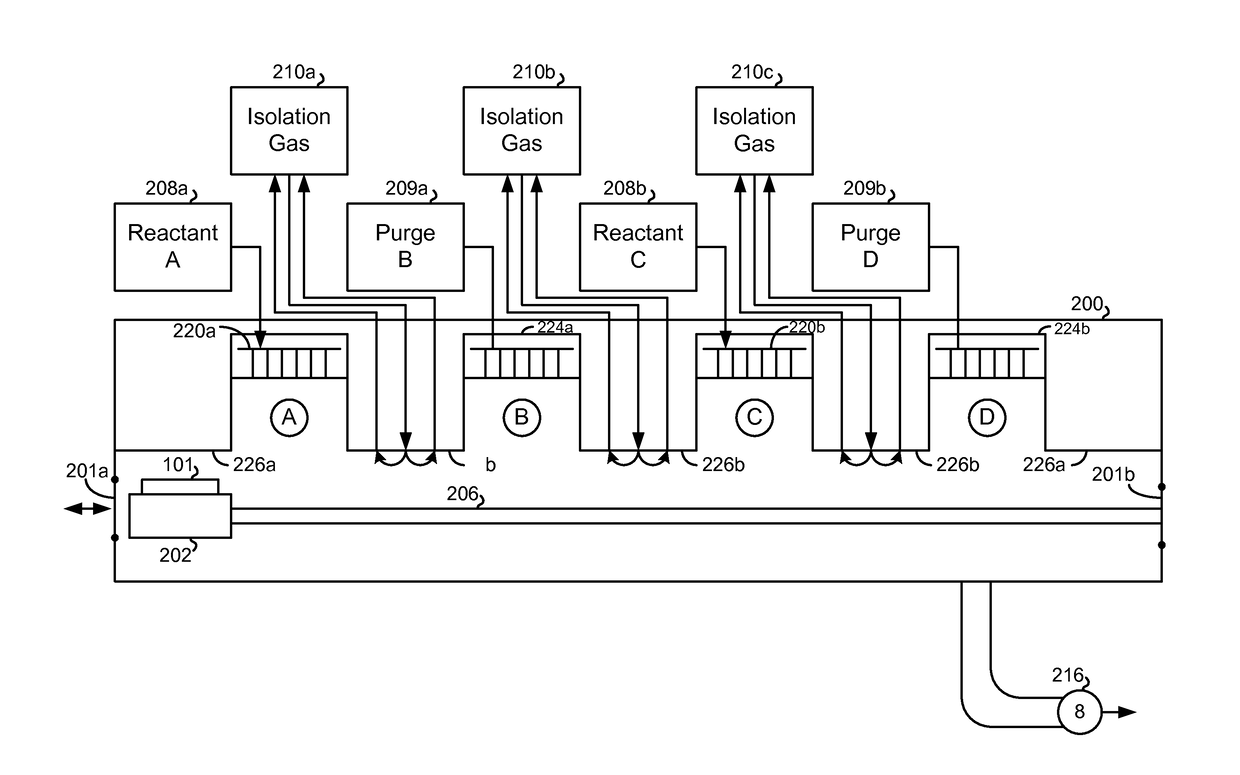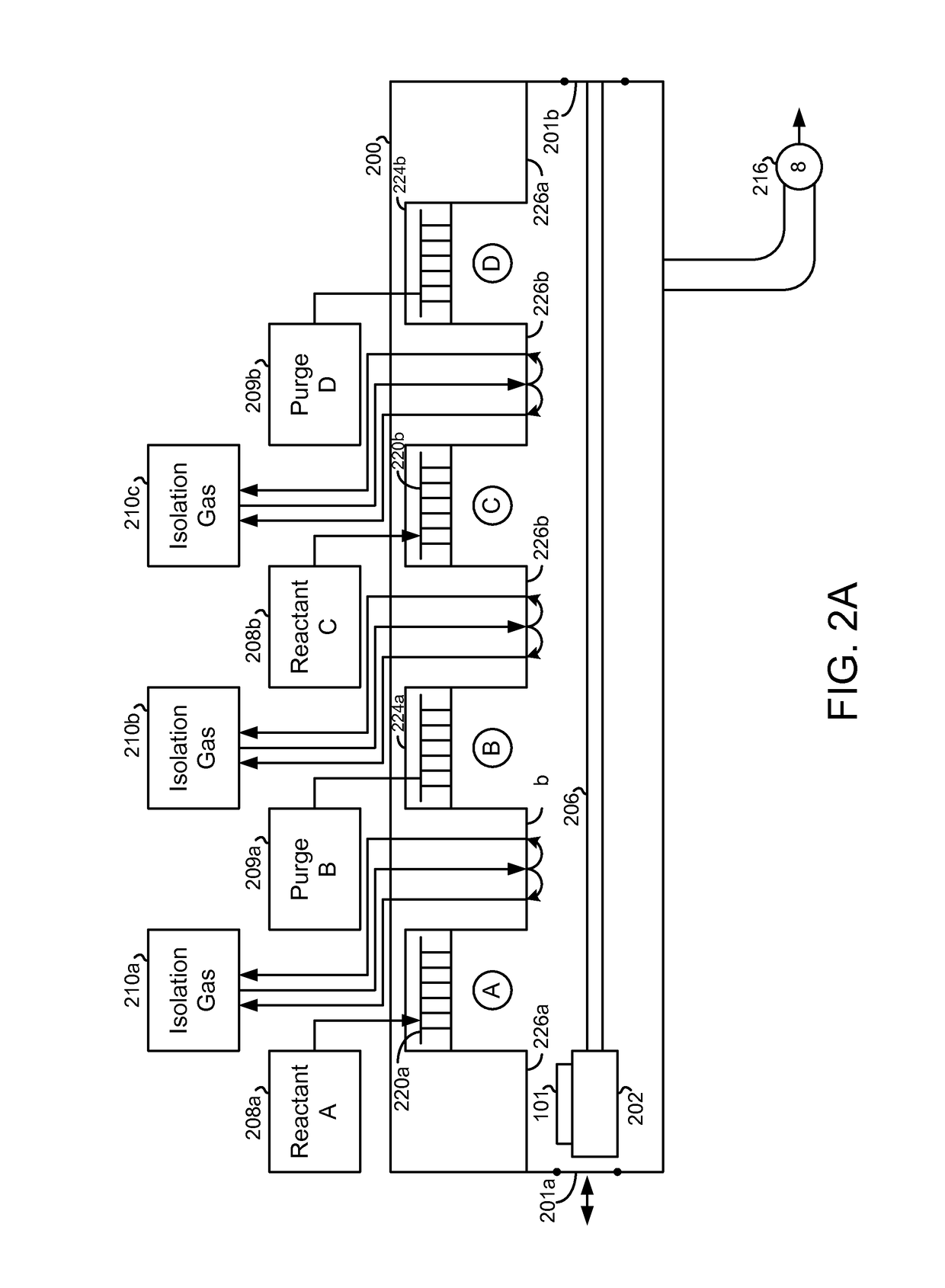Plasma Excitation for Spatial Atomic Layer Deposition (ALD) Reactors
- Summary
- Abstract
- Description
- Claims
- Application Information
AI Technical Summary
Benefits of technology
Problems solved by technology
Method used
Image
Examples
Example
[0032]Embodiments of the disclosure provide examples of atomic layer deposition (ALD) reactors that operate as spatial ALD reactors, wherein rather than bringing reactants to the substrate, the substrate is moved to the reactants instead. For example, in one spatial ALD configuration, the reactants are brought to the substrate (or vice versa) in space. The reactants and substrate need to move relative to each other. In one embodiment, the radio frequency (RF) excitation comes from the substrate side and moves with the substrate, eliminating moving plasma fronts that can cause current imbalances and device damage. In one embodiment, moving the substrate with the RF excitation can occur by translating the substrate linearly or rotating the substrate about an axis distal to the substrate center. In the examples provided herein, without limitation to other ways of moving the substrate and RF excitation, a shuttle that supports the substrate is linearly or circularly moved along a track....
PUM
| Property | Measurement | Unit |
|---|---|---|
| Height | aaaaa | aaaaa |
| Power | aaaaa | aaaaa |
| Height | aaaaa | aaaaa |
Abstract
Description
Claims
Application Information
 Login to View More
Login to View More - R&D
- Intellectual Property
- Life Sciences
- Materials
- Tech Scout
- Unparalleled Data Quality
- Higher Quality Content
- 60% Fewer Hallucinations
Browse by: Latest US Patents, China's latest patents, Technical Efficacy Thesaurus, Application Domain, Technology Topic, Popular Technical Reports.
© 2025 PatSnap. All rights reserved.Legal|Privacy policy|Modern Slavery Act Transparency Statement|Sitemap|About US| Contact US: help@patsnap.com



